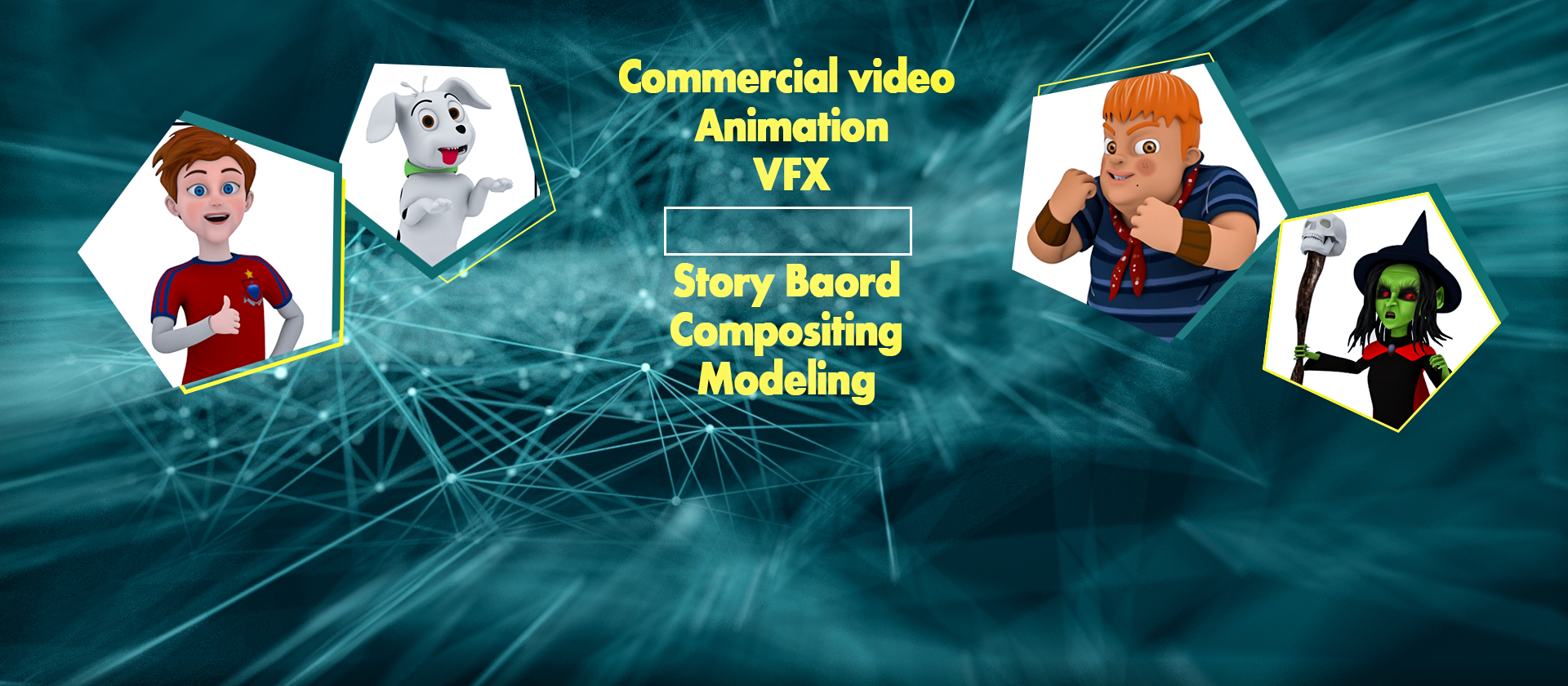Commercial Video
Give your business the visuals it deserves
Lighting
Lets all shots be illuminated from the best angles

Visual Effects VISUAL EFFECTS (FX)
Sometimes adding effects in live-action isn’t possible. And if it is, it’s usually costly. This is where VFX comes in. It is applied to real humans, objects and scenes. So, the final output that you see is the combination of a real thing and special effects. For example, VFX has been heavily used in movies that Avengers, Avatar and Harry Potter.

Compositing
This is the process where the CGI and VFX are added to live-action footage. It includes assembling different elements pre-production to edit and produce a final animated imagery. For complex graphics, here, different textures and objects are layered that make animated moving parts smooth and real.

Storyboard
Get a fair idea of how the final output will look before we actually dive into the nitty-gritty. A storyboard is simply a graphical presentation of how your animation will look post-production, with respect to different aspects like the camera angles, lighting, character sketch and more.

Modelling
What sculpting clay is to a sculptor, modelling is to us. It basically means producing a graphical representation of any object by manipulating points in vertices. The primitives like cubes, plains and spheres are used and wrought to form a mesh. Although we leverage advanced tools, the more complex the object is, the more time and manual work it requires.

Texturing
It entails adding the textures and little details in the background that makes our 3D models look more realistic and detailed. The shading intensity and its accuracy depend on the number of smaller polygons it has and how precisely the edges match the model. The textures, once completed, are then allotted to specific scenes and models.

Rigging
- The skeletal structure you see of the 3D model, it’s created through rigging technique. It defines the movement and posture of the model. If done effectively, it helps achieve higher smoothness and accuracy in animation. The rigging phase is like pulling the strings of a puppet. The more precise the “pull”, the more fluid the object’s movements will be./p>

3D Animation
The games you played a decade back vs. the games you play now – there’s a big difference in that, is there not? And this is just as true about any animated graphics. Courtesy of the 3D technology, they are now more life-like and attractive. This step involves manipulating 3D models and then animating them through techniques like abating and bond and rendering.

Lighting
The angle from where the light will fall, the kind of light effects to be used, the intensity of the light, how the shadows will look and more – these are little things that are taken care of in this step. It is the lighting that brings out the animated objects to life. Depending on the situation, different lighting options are used like area light and ambient light.

Rendering
Once everything is done (like modelling, lighting, and rigging) and once your internal presentation of a scene is ready, it’s time now for the final step. Rendering involves integrating all the different components of your internal objects to output the final result that’s optimized for the end purpose.


